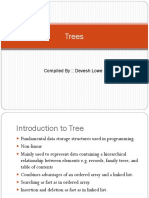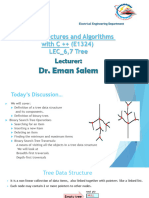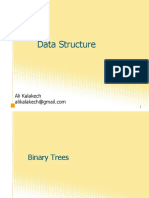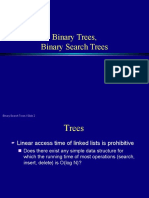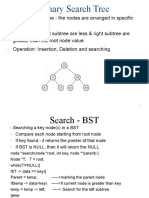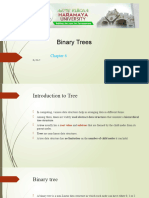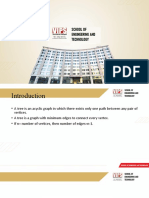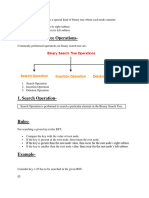0% found this document useful (0 votes)
19 views43 pagesDsa24 7
The document discusses binary trees and tree traversal algorithms. It defines key concepts like root, leaf nodes, height of a tree. It also covers transforming general trees to binary trees and different depth first traversal orders for binary trees like preorder, inorder and postorder.
Uploaded by
parmarnupur44Copyright
© © All Rights Reserved
We take content rights seriously. If you suspect this is your content, claim it here.
Available Formats
Download as PDF, TXT or read online on Scribd
0% found this document useful (0 votes)
19 views43 pagesDsa24 7
The document discusses binary trees and tree traversal algorithms. It defines key concepts like root, leaf nodes, height of a tree. It also covers transforming general trees to binary trees and different depth first traversal orders for binary trees like preorder, inorder and postorder.
Uploaded by
parmarnupur44Copyright
© © All Rights Reserved
We take content rights seriously. If you suspect this is your content, claim it here.
Available Formats
Download as PDF, TXT or read online on Scribd
/ 43




